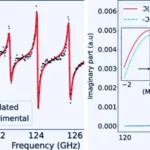Key Points
- Isabelle Baraffe was awarded the Fred Hoyle Medal; her models of brown dwarfs and low-mass stars revolutionized the field.
- She developed a general theory on the structure and evolution of exoplanets.
- Baraffe’s innovative use of the MUSIC code has opened new paths in astrophysical studies, which have been funded by prestigious ERC grants.
- The global community widely uses Baraffe’s evolution model grids to interpret astronomical observations.
Professor Isabelle Baraffe, a renowned astrophysicist from the University of Exeter and the Centre de Recherche Astrophysique de Lyon (CRAL), was awarded the Fred Hoyle Medal in 2024 for her pioneering research in theoretical astrophysics. Her work has revolutionized our understanding of the structure and evolution of stars and planets, solidifying her position as one of the leading figures in the field.
Baraffe’s research has substantially advanced in studying brown dwarfs and low-mass stars. She developed sophisticated structure and evolution models that integrate interior structures and atmosphere models, incorporating cutting-edge descriptions of microphysics. These models have significantly changed the field by successfully explaining and even predicting the unique observational characteristics of these low-mass objects. Her models have become a cornerstone for modern astrophysical research and have been widely adopted by the global community of astronomers.
In addition to her work on stars, Baraffe has made significant contributions to the study of exoplanets, particularly following the discovery of the first exoplanets in the 1990s. She developed a general theory that describes the inner structure, atmospheric properties, and evolution of planets across a wide mass range—from Earth-like planets to gas giants like Jupiter. Her groundbreaking research laid the theoretical foundations for studying exoplanets.
Baraffe’s recent work includes the development of multi-dimensional stellar models using the innovative MUSIC code (MUltidimensional Stellar Implicit Code), funded by back-to-back European Research Council advanced grants awarded in 2013 and 2018. This project has opened new avenues for studying fundamental astrophysical and geophysical processes, and its results are already yielding exciting findings.
Her evolution model grids are an invaluable resource for the scientific community, aiding researchers worldwide in interpreting astronomical data and devising new observational strategies. Her influence on the field is far-reaching, as her models are used by astronomers studying both stellar physics and exoplanets.










